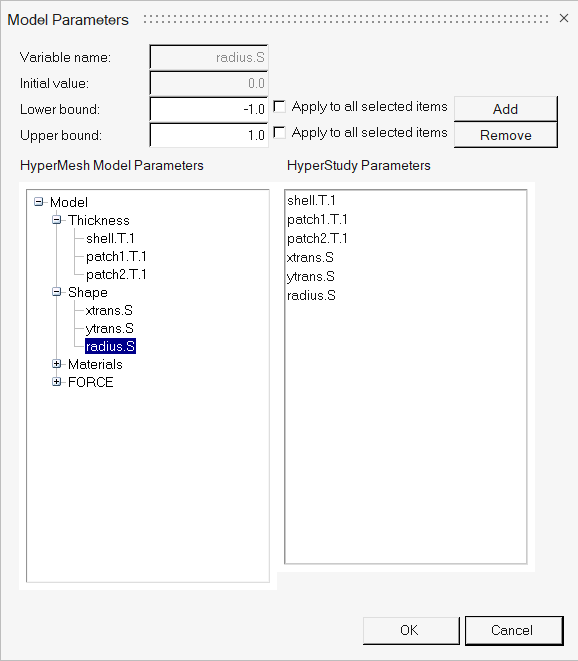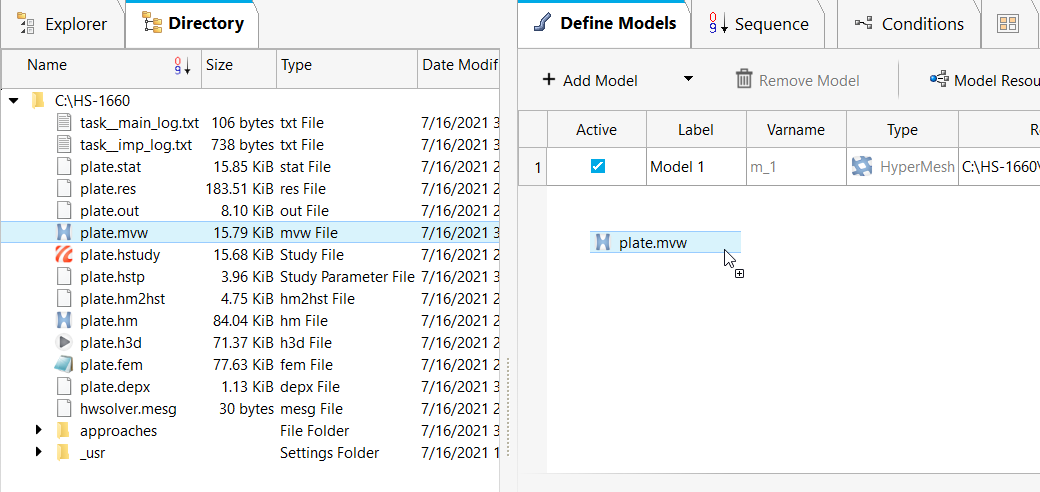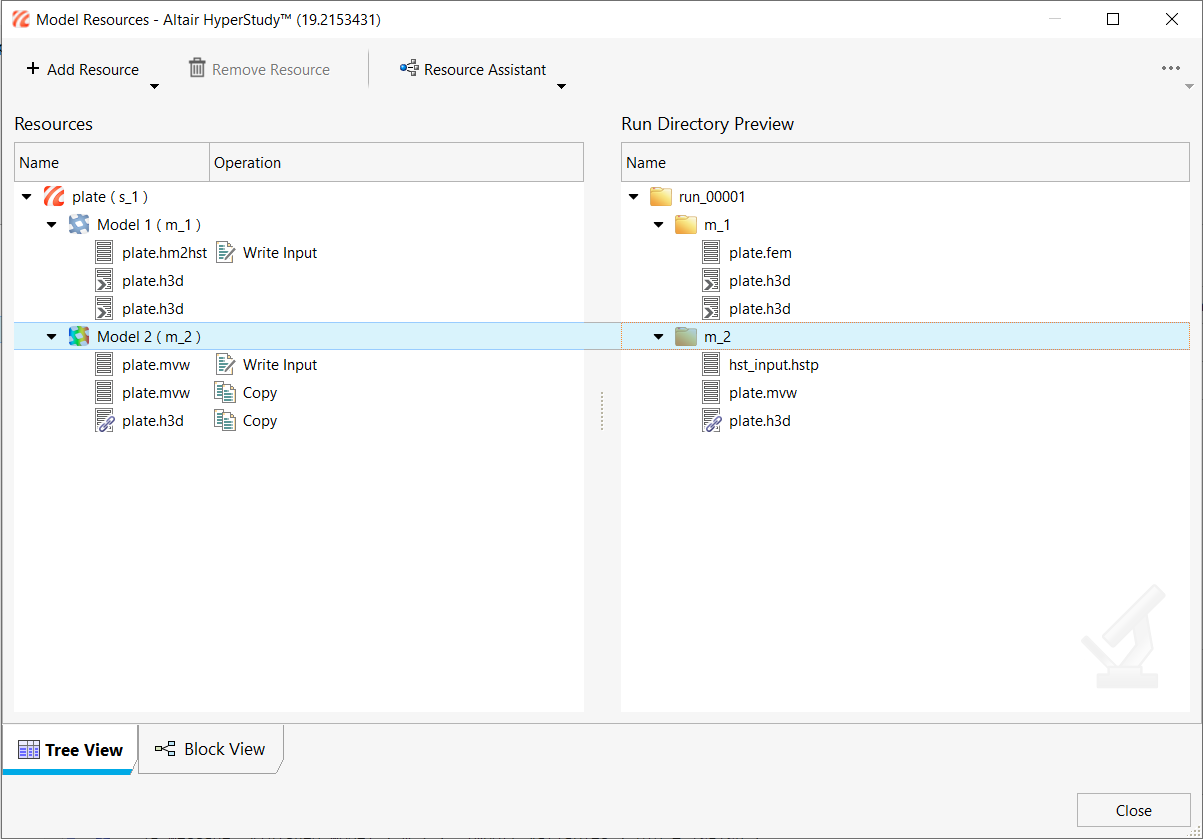HS-1660: Extract Hotspots with HyperView Model
In this tutorial, you will learn to read hotspots from a numerical analysis output into HyperStudy via a HyperView model.
Run OptiStruct Job within HyperMesh
In this step, you will perform a numerical analysis to obtain the result file required in the HyperView model setup phase.
- Launch HyperWorks and open the plate.hm file from your working directory.
- From the Analyze ribbon, Run group, click the Run OptiStruct Solver satelite tool.
-
From the panel, define the following parameters and click
OptiStruct.
- For export options, select all.
- For run options, select analysis.
- For memory options, select memory default.

Figure 1.OptiStruct opens. - Close OptiStruct.
Import Variables from HyperWorks
In this step, you will import input variables from HyperWorks to HyperStudy.
-
From the menu bar, click File > Export and select HyperStudy.
The HyperStudy Export dialog opens.
-
In the HyperStudy Export dialog, define the following
parameters and click Export.
- For Study Name, enter plate.
- For Study Path, browse to your working directory.
- Enable the Launch HyperStudy checkbox.
The Model Parameters dialog opens. -
In the Model Parameters dialog, add variables as shown
below and click OK.

Figure 2.HyperStudy launches with the HyperWorks model. - Go to the Test Models step and click Run Definition.
Query Hotspots in HyperView
In this step, you will query hotspots in HyperView and prepare the session file.
-
From the Directory, right-click the
plate.h3d file and select Open with > HyperWorks.
HyperWorks opens.
- From the Results tab, Plot group, click the Contour tool.
- From the panel, select Element Stresses (2D & 3D) for the Result type and click Apply.
- From the Results tab, Query group, click the Hotspot tool.
-
From the guide bar, click
 .
The Hotspot Finder dialog opens.
.
The Hotspot Finder dialog opens. -
In the Hotspot Finder dialog, query shell hotspot.
- For Label, enter Shell.
- For Result Value Filter, verify Greater than is selected and enter 1.e+1
- Click Find Hotspot.

Figure 3. -
Query Patch1 hotspot.
- For Label, enter Patch1.
- For Result Value Filter, verify Greater than is selected and enter 1.e+1
- Click Find Hotspot.
-
Query Patch1 hotspot.
- For Label, enter Patch1.
- For Result Value Filter, verify Greater than is selected and enter 1.e+1
- Click Find Hotspot.
- In the Hotspot Finder dialog, click Save and close the dialog.
Add HyperView Model
In this step, you will setup a HyperView model
-
From the Directory in HyperStudy, drag-and-drop the
plate.mvw file into the Define Models area.

Figure 4. - Click Import Variables.
-
In the Define Models area, click Model Resources.
The Model Resources dialog opens.
-
In the Model Resources dialog, define a model dependency
that references the result file from m_1 directory,
plate.h3d to be used as an input for the HyperView model.
- Select Model 2 (m_2).
- Click Resource Assistant > Add File.
- In the Select File diaog, navigate to the m_1 directory and add the plate.h3d file.
- Set the plate.h3d operation to Copy.

Figure 5. - Close the Model Resources dialog.
- Go to the Test Models step and click Run Definition.
-
In the Define Output Responses step, review the hotspot responses.

Figure 6.